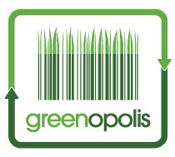Grocery Cart Art
From useful and mundane to purposeful and cultivated
From useful and mundane to purposeful and cultivated
It's an object we'd recognize anywhere. We see it in our everyday lives. And it has helped us move food on the shelves to food in our homes. Only in these images, the shopping cart is not being used for its intended purpose. Last year, cross-media visual designer and Los Angeles local Ramón Coronado began work on a 12-week project titled Mercado Negro ("Black Market" in Spanish) with two goals in mind: 1) Take an everyday shopping cart and transform it into something useful and different and 2) make a statement about the lack of parks/recreational areas in LA.
I can't remember where I came across Coronado's work, perhaps StumbleUpon or Guy Kawasaki's Alltop, but I was enthralled and inspired. Not only because he reclaimed trash, but more so because he used it to alter the dynamics of his locality. Poverty, trash and shopping carts are no strangers to the area near Coronado's home. "I took it upon myself to take a shopping cart and make a statement with it. I reclaimed LA's iconic shopping cart and created furniture for kids to enjoy in these urban Los Angeles areas. The project is a criticism of the scarcity of recreational functions for kids growing up in a dense city like Los Angeles," Coronado comments on his site.
Twelve weeks after the start of the project, Coronado had constructed park furniture including a chair, table, lamp and swing. The images below came from Coronado's site. You can see more of the process and the final designs here. This is for sure one of my favorite examples of reclaimed art, and perhaps one of the most meaningful.
Greenopolis.com is dedicated to our users. We focus our attention on changing the world through recycling, waste-to-energy and conservation. We reward our users for their sustainable behaviors on our website, through our Greenopolis Tracking Stations and with curbside recycling programs.
GREENOP5279

